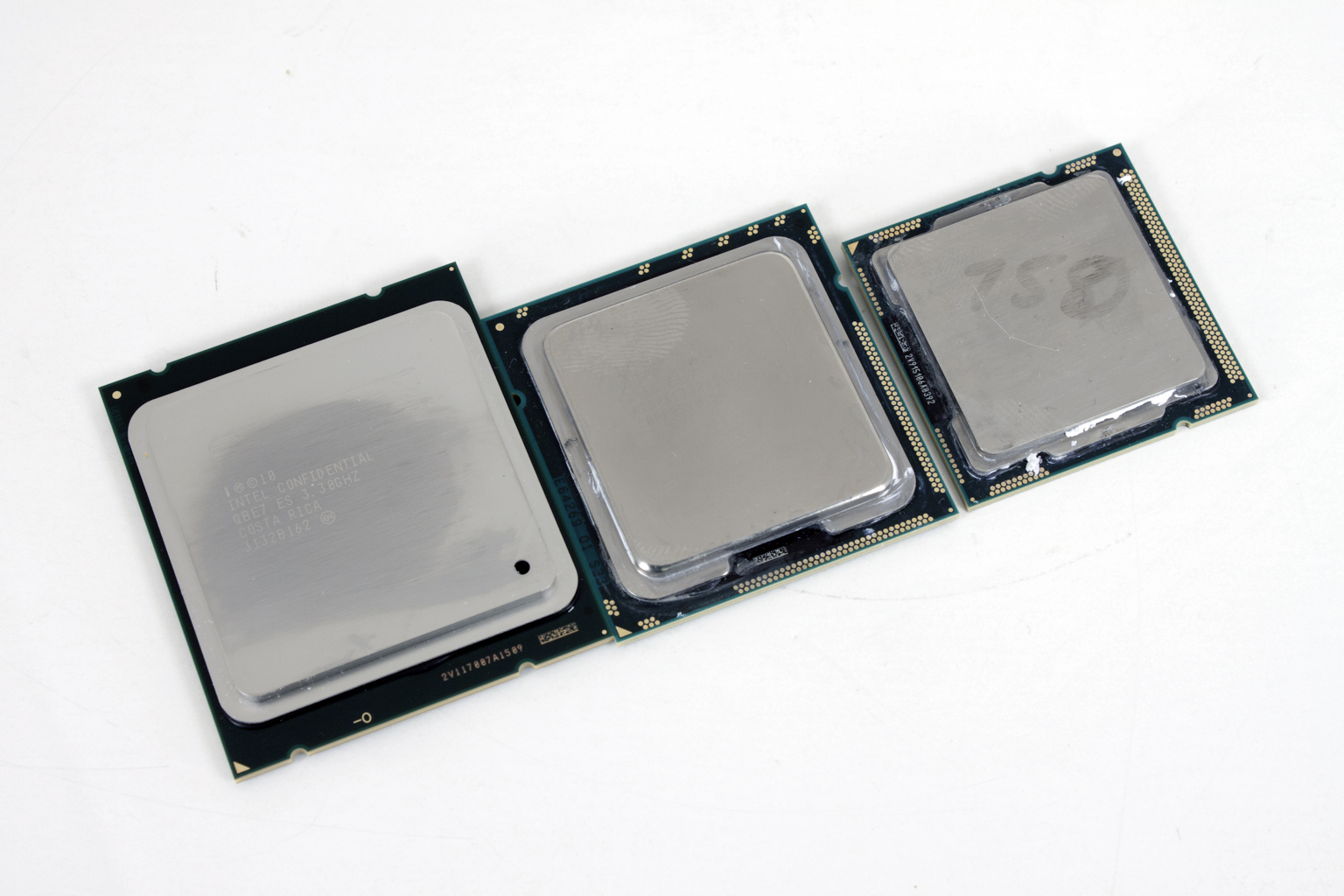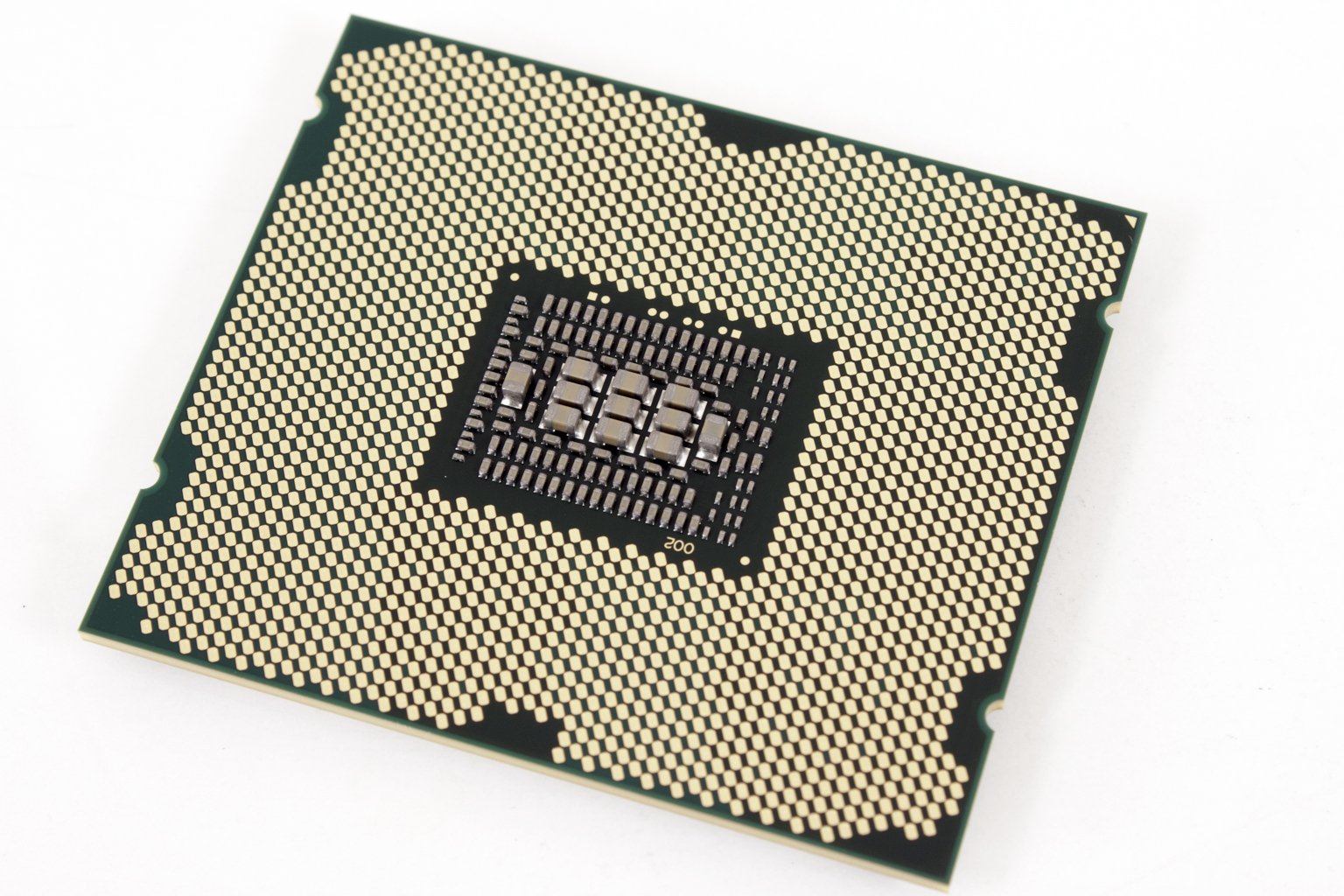What’s new?
The new Sandy Bridge E processors are quite a serious piece of silicon. For starters the number of lands on the bottom of the processor increased from 1366 to a 2011. The increase in connections is needed as Intel has packed quite a bit more PCIe lanes into the Sand Bridge E CPUs a total of 40 lanes are available and not just for graphics this time. But let’s not get too far ahead of ourselves and start off with the basics.
The Core i7 980X Gulftown CPU had a core size of 248mm^2 and a transistor count of 1.17 Billion. By comparison the Sandy Bridge 2600K sported a die size of 214mm^2 and roughly 995 Million transistors inside that small area. The new Sandy Bridge E CPU will come in a large 434mm^2 package and almost twice the number of transistors as the 980X at 2.27 Billion! The extra space comes from an increased (and combined) L3 Cache. In the case of the 3960X this is a full 15MB of cache that is shared dynamically between all six of the cores. 
The memory controller has also received some work and now supports four channels of DDR3 1600 MHz memory. This is a first in a desktop CPU and something that should be impressive to see in action. Theoretically this new memory setup can deliver up to 50 GB/s of memory bandwidth. In fact Intel is claiming a 102% increase in memory bandwidth over the 980X and its triple channel memory controller. With today’s memory hungry applications that is going to be very important.
 |
 |
Now let’s get back to the PCIe lanes. One of the Achilles heels of the Sandy Bridge (and Lynnfield before that) was a problem with the small number of PCIe lanes. In Lynnfield you got 16 which was specifically for graphics and enabled direct path to the CPU for increased graphical performance (on paper, we never saw that in reality). This continued on into the Sandy Bridge line up and forced many manufacturers to and in bridges (nVidia NF200 mostly) to get three way (or even four-way) crossfire and SLI support. This move increased the power draw and heat generation on the board. It also slowed down the over graphical performance a little as all of these parts had to talk together and as each piece communicated there was overhead to drag away at performance. With the new Sandy Bridge E series you are getting a full 40 Lanes directly in the CPU which will allow for three way graphics right out of the box, no bridge needed (we will be trying this out for sure).
Intel is bringing over both the AVX and AES instructions into the Sandy Bridge E processors (as if you would expect any less) as well as the SSE 4.1 and 4.2 instruction set. However, it really seem like the major changes are in the PCIe controller, the Caching structure and the Internal Memory controller. Of course, these three things are huge when taken as a whole.



